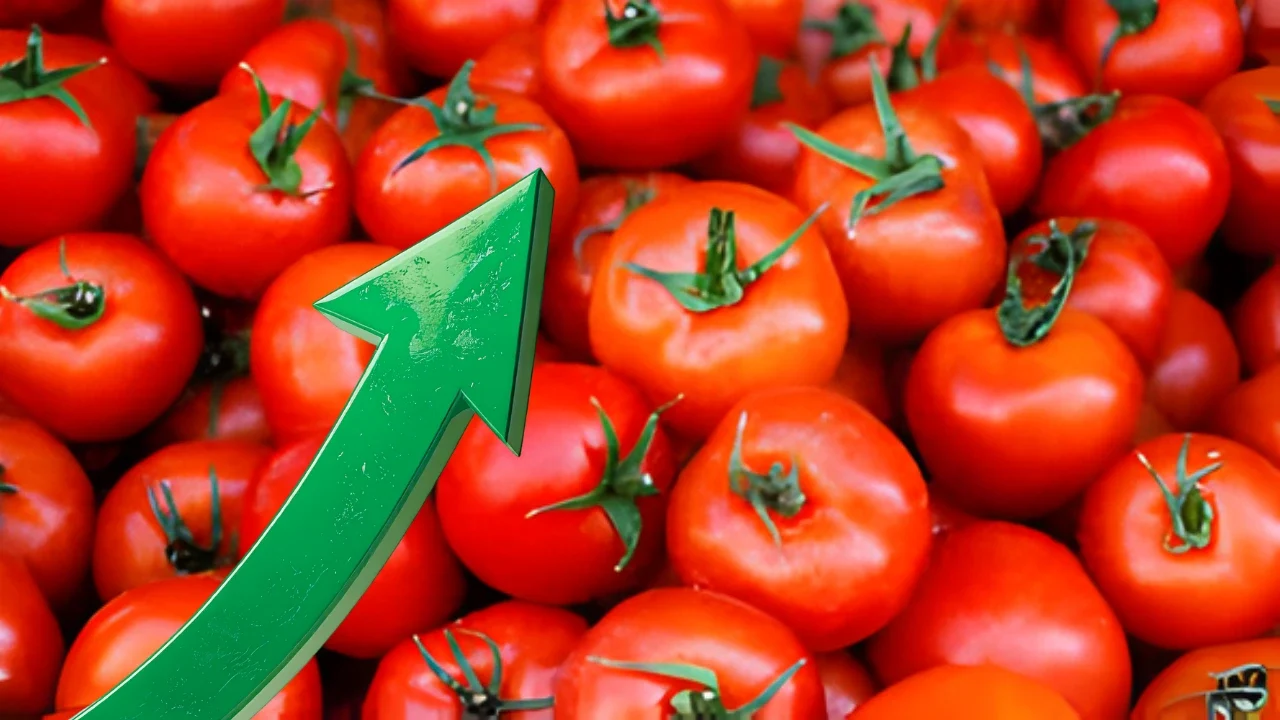By Muhammad Luqman
When a kilo of tomatoes starts costing more than chicken, you know something has gone terribly wrong. Across Pakistan, tomato prices have skyrocketed past Rs500 per kilogram, while the official rate sits at Rs175 — leaving shoppers stunned and kitchens struggling.
Tomato Price in Pakistan Hits Record High
“Usually, tomatoes get pricey by November, but this year the shortage hit early — in October,” said Saddam Athar Khan, Secretary General of the Fruit and Vegetables Traders Association at Lahore’s Badami Bagh market. “Crops in Balochistan and Sindh were badly damaged, and that’s where the trouble began.”
Climate Trouble and Crop Collapse
Speaking to this reporter, Khan explained that tomato fields in Balochistan, already battered by heavy rains and floods, are nearing their end.
Most of the remaining supply is trickling in from Harnai district, but even that’s not enough. Imports from Iran have dropped sharply, and the closure of trade routes with Afghanistan has made matters worse.
“The number of tomato trucks reaching Punjab’s markets is nowhere near enough to meet the demand,” Khan said. “It’s mostly a supply problem — though, yes, some traders are taking unfair advantage.”
Hope From Sindh and Punjab
Agriculture officials say relief could be coming next month. Fresh tomato harvests from lower Sindh districts such as Thatta and Badin are expected soon, followed by early crops from Khushab and other hilly areas of Punjab in December.
“The supply situation will likely get better as Sindh and Punjab’s crops hit the markets,” said Ijaz Ahmad Jitala, Director of Fruits and Vegetables at the Punjab Agriculture Department. “The full crop from central Punjab will mature around March.”
He added that tomatoes from Sindh normally arrive in October, but this year’s historic floods pushed the harvest into November. “Pakistan’s tomato cycle starts in Balochistan and ends in Punjab.
But this year, climate change and flooding have broken that rhythm — and now we’re paying the price,” Jitala explained.
Floods and Missing Imports Push Prices Up
Typically, tomatoes are planted twice a year — between January and March for the spring crop, and July to September for the autumn crop. By October, the autumn harvest usually stabilizes prices. But this year, with floods wrecking fields and trade routes disrupted, that balance has completely collapsed.
Last year, Punjab grew tomatoes on over 19,000 acres, producing nearly 90,000 tonnes. This season, output has fallen sharply.
Government Efforts to Control Soaring Tomato Prices
The Punjab Price Control Department agrees that the spike stems from poor harvests in flood-hit provinces and reduced imports from Iran and Afghanistan.
“Imports from Afghanistan will resume once the Torkham border reopens,” said Talha Malik, the department’s spokesperson. “That will help ease the situation in Lahore and other parts of Punjab.”
Malik said the government is trying to smooth out the import process to steady prices. “As more tomatoes start arriving from Sindh and other provinces next month, we expect the rates to drop,” he added.
For now, though, Pakistani households are left facing a sour truth: their favorite curry may have to do without tomatoes — or with just one, sliced very thin.
Author Profile
-
Muhammad Luqman is an experienced journalist specializing in agriculture, livestock, and rural development in Pakistan.
He writes insightful reports on government initiatives, economic potential, and policy impacts in the agriculture and livestock sectors, highlighting how local programs shape livelihoods and boost national and international markets.





